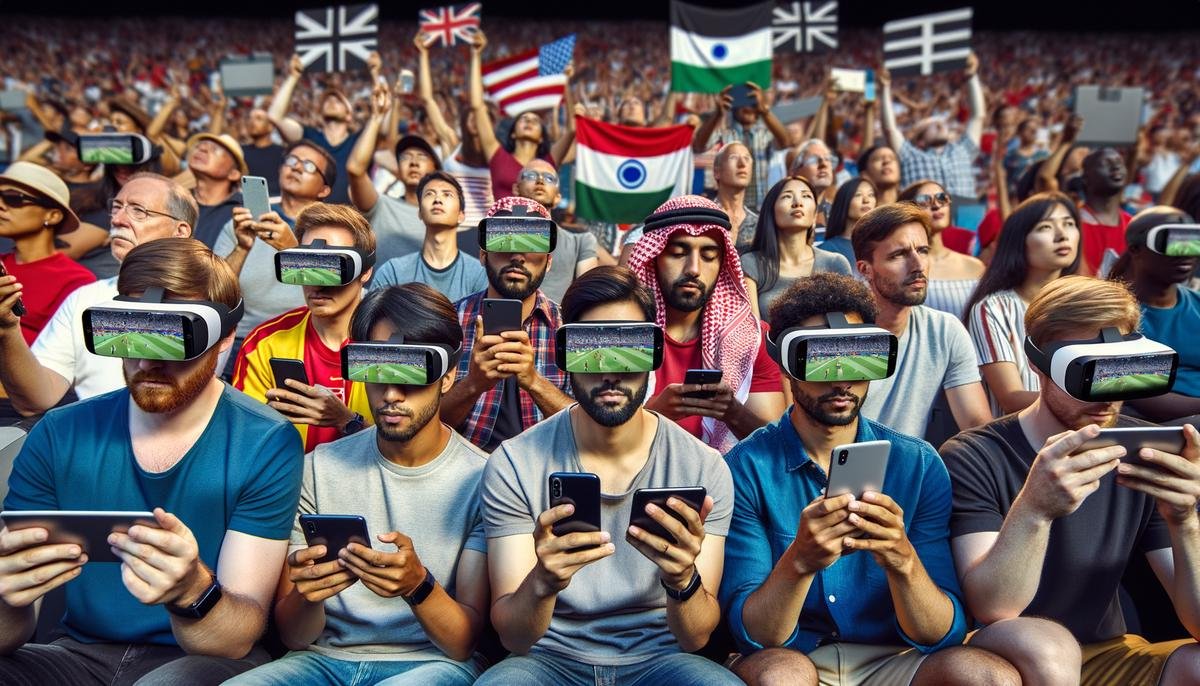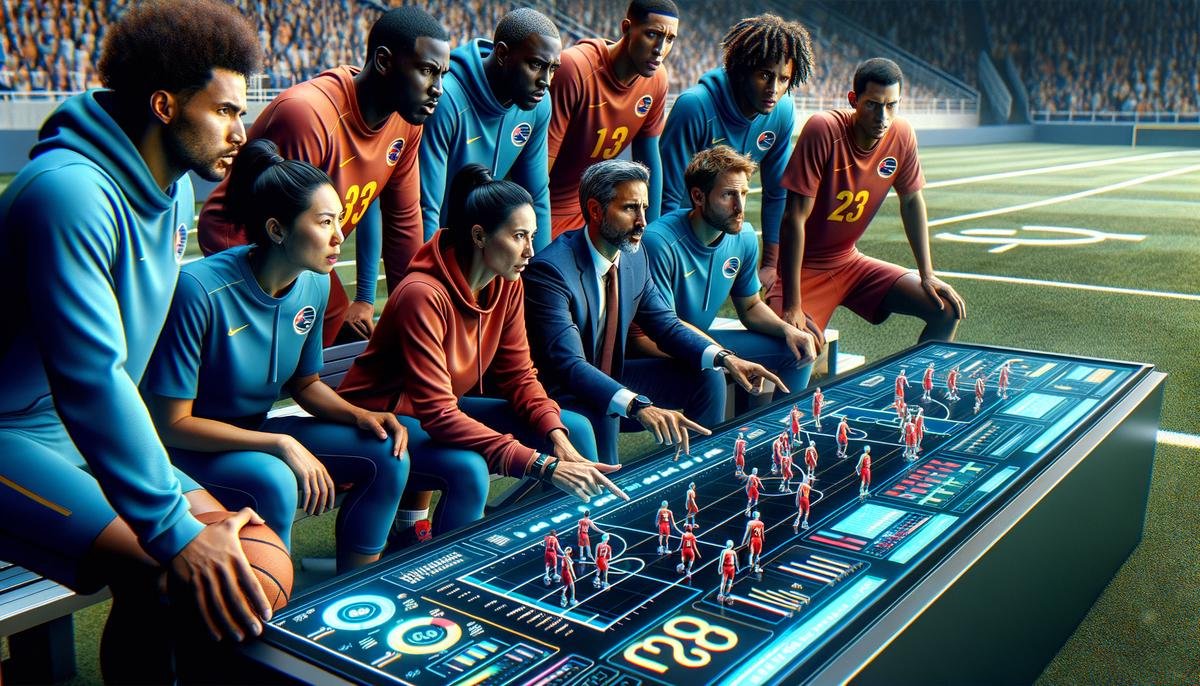Artificial intelligence is reshaping how we understand and engage with sports. From enhancing player performance to revolutionizing fan experiences, AI’s impact is multifaceted. This article explores the various ways AI is integrated into sports.
AI in Player Performance Analytics
AI is elevating player performance through detailed metrics. The NBA’s collaboration with Second Spectrum uses AI-powered systems to track player movements, providing data on shooting angles, defensive positions, and player tendencies. This aids coaches and enhances real-time analysis during games.
Soccer teams are also advancing. Seattle Sport Sciences uses AI to evaluate soccer players by analyzing game footage to identify strengths, weaknesses, and predict player reactions. This helps create precise training programs for individual needs.
AI is progressing in injury prediction by monitoring players’ biomechanics and historical data. This proactive approach helps adjust training regimes to minimize risks and keep athletes at their peak longer.
AI systems can suggest exercises, drills, and rest periods based on real-time performance data and recovery metrics. This real-time adjustment keeps athletes performing efficiently without overtraining.
In summary, AI in player performance analytics provides a data-driven approach to:
- Improving athlete performance
- Predicting injuries
- Creating optimal training regimes
AI-Enhanced Sports Equipment
AI and sports equipment are combining to improve both performance and safety. Google’s Jacquard tag, integrated into football gear, captures data on player movements, impacts, and exertion levels. Coaches can access this data in real-time to make strategy adjustments and manage player load.
In golf, AI-powered solutions design clubs suited to individual golfers’ swing patterns. These smart clubs analyze swing speed, angle, and force, offering players personalized insights for improvement.
AI-driven advancements also improve player safety. Sensors in sports helmets monitor impact forces, with AI algorithms predicting possible concussions and alerting medical teams.
This continuous loop of data collection and analysis helps athletes reach their potential while ensuring safety is monitored and managed.

AI in Fan Engagement
AI is advancing fan engagement by delivering personalized, interactive experiences. Wimbledon’s collaboration with IBM offers AI-powered audio commentary that analyzes ongoing matches in real time, providing fans with insightful commentary adapted to the play’s developments.
AI algorithms analyze user behavior, social media interactions, and viewing patterns to curate content that resonates with each fan. This includes:
- Customized highlights
- Exclusive footage
- Player interviews delivered directly to fans’ devices
AI can suggest specific merchandise that appeals to fans based on their preferences and purchasing patterns. This enhances the shopping experience and targets the right audience with relevant products.
The integration of AI with virtual reality (VR) and augmented reality (AR) technologies offers immersive experiences. AR can bring static images on trading cards or posters to life, while VR offers virtual stadium tours.
AI-driven predictive analytics can forecast fan behavior, helping optimize engagement strategies. This enables sports organizations to keep fans continually engaged and invested in the sport.

AI for Fairer Sports Judging
AI is improving the accuracy, consistency, and fairness of decision-making in sports competitions. Advanced AI systems provide precise, objective insights through real-time data analysis.
In sports like gymnastics and figure skating, AI algorithms analyze every movement against predefined criteria, ensuring consistent judgments across competitions. This minimizes subjective biases that may arise from a judge’s perception or fatigue.
AI’s rapid data processing allows for real-time analytics in dynamic sports settings. For example, in basketball, AI can analyze player movements, ball trajectory, and contact points instantaneously, providing data-driven recommendations to referees.
“AI-supported sports judging enhances transparency by providing clear, data-backed insights. This helps stakeholders understand the rationale behind decisions, as seen with systems like Hawk-Eye in tennis.”
While AI provides data-driven insights, human judges retain the final say. This combination harnesses the strengths of both AI’s precision and human intuition, leading to more balanced and accurate judgments.

AI in Real-Time Data Delivery
AI’s integration into real-time data delivery has transformed how players, coaches, broadcasters, and fans interact with sports. It offers instantaneous insights and analytics, making decision-making processes more dynamic and informed.
During live games, coaches receive immediate feedback on player actions, movements, and team dynamics. In soccer, AI systems track players’ speed, distances covered, positional play, and physiological data. This information aids in decisions about substitutions, tactical adjustments, and training focus areas.
Broadcasters benefit from AI-driven real-time analytics through data overlays during live broadcasts, providing audiences with enriched content. AI also automates the generation of real-time highlights, key moment alerts, and statistical breakdowns.
Fans can access live statistics through mobile apps, enriching their experience. Features like real-time stat tracking and interactive graphics allow fans to explore player performances, team tactics, and historical data comparisons as the action unfolds.
Teams use real-time analytics to adjust game plans on the fly, responding to opponents’ tactics or in-game conditions. This instantaneous feedback loop allows for more responsive and adaptive strategies.
AI’s real-time capabilities extend to scouting and recruitment, allowing for more accurate assessments of a player’s current form and fit within a prospective team.

AI’s integration into sports is setting new standards in the industry. By providing real-time data, enhancing player safety, and creating personalized fan experiences, AI is driving innovation and engagement in sports.




